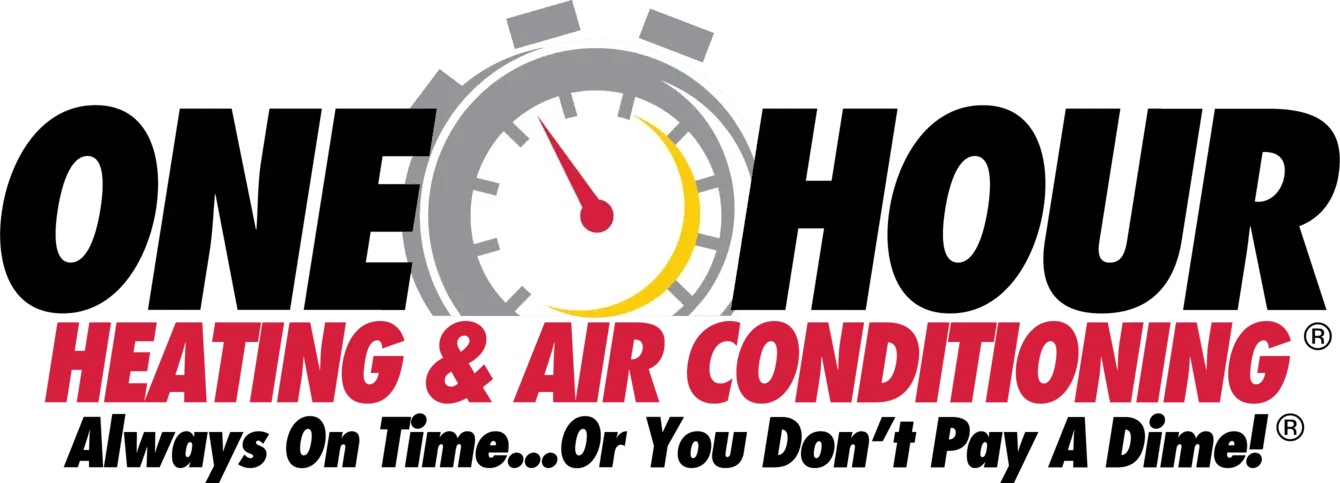Why Fall Is the Best Time for HVAC Upgrades in Arizona
A new heating and air conditioning system can greatly improve your home’s indoor comfort. However, certain times of the year make the process easier and more efficient than others. Here are the top reasons to upgrade your Arizona home's HVAC system in autumn.
More Agreeable Weather
Summer in the Grand Canyon State often brings daytime temperatures that soar past 100 degrees Fahrenheit. This intense heat, combined with bright desert sunlight, can make outdoor work unsafe and uncomfortable. During summer, our team at One Hour Heating & Air Conditioning® stays busy with AC maintenance and repair calls as customers rely on their cooling systems to beat the heat. No one wants to risk an air conditioner breakdown during a triple-digit heat wave. When fall arrives, the weather cools to more manageable temperatures, creating safer and more comfortable conditions for major projects like upgrading your HVAC system. A new air conditioner or heat pump installed in fall gives you peace of mind that your system will perform efficiently and reliably when temperatures rise again.
Time for Smarter Choices
Extreme summer temperatures leave little time for research or decision-making when an air conditioner fails. In autumn, you can take time to evaluate your options and select the best HVAC system for your home’s size, layout, and efficiency goals. This slower pace allows you to make a well-informed choice that will serve you for years to come.
Improved Energy Efficiency
One of the biggest reasons to upgrade your HVAC system is energy efficiency. Older systems consume more power and struggle to maintain even temperatures, especially in Arizona’s long cooling season. Upgrading to an ENERGY STAR®-certified system can improve efficiency by 10% to 30%, potentially saving hundreds of dollars annually depending on your usage and local utility rates. Over time, this investment helps reduce both your monthly energy bills and your carbon footprint.
Smart Technology
Many modern HVAC systems come equipped with smart technology that simplifies comfort control. Smart thermostats, for example, allow you to program cooling and heating schedules for your home. You can set the temperature higher when you’re away during the day and lower it before you return, helping you save on energy costs. Smart thermostats also offer remote access through mobile apps, allowing you to adjust settings from anywhere and track your energy usage. Some Arizona utilities, including APS and SRP, even offer rebates for installing qualified smart thermostats.
Eco-Friendly Refrigerants
Refrigerant is the chemical compound that enables your air conditioner or heat pump to cool your home. Fall is the ideal time to upgrade to a system that uses a more environmentally friendly refrigerant. Many new HVAC systems are transitioning to eco-friendly refrigerants such as R-454B and R-32 under EPA rules from the American Innovation and Manufacturing (AIM) Act. These newer refrigerants are gradually replacing R-410A, which has a higher global warming potential. R-22 (also known as Freon-22) has already been fully phased out in the United States since January 1, 2020. If your air conditioner still uses R-22, this fall provides an excellent opportunity to replace it with a modern, eco-conscious system that meets new environmental standards.
Resolving a Refrigerant Leak
Upgrading your HVAC system can also eliminate the hassle of dealing with an older unit prone to refrigerant leaks. Leaks not only reduce efficiency and cooling performance but can also harm the environment. Watch for signs of a refrigerant leak, such as:
- Warm air coming from the vents
- Higher-than-usual energy bills
- Frequent or short cycling
- Frozen evaporator coils
- Hissing or bubbling sounds near the outdoor unit
Most refrigerants are odorless, so a leak might not produce any noticeable smell. If you suspect one, call a certified HVAC technician. Only professionals with EPA Section 608 certification are legally allowed to handle refrigerants like R-410A and R-32.
Better Air Quality
Once winter arrives, Arizona homeowners spend more time indoors—and better indoor air quality becomes essential. Older HVAC systems may have weaker airflow or outdated filters, allowing dust, pollen, and other particles to linger in the air. Upgrading to a new system with advanced filtration or integrated air purification helps circulate cleaner air and reduce indoor allergens. This can make a noticeable difference in comfort, especially for families with children or anyone with respiratory sensitivities.
Quieter Operation
Modern HVAC systems are designed for quiet, efficient performance. Older units often produce grinding, rattling, or humming noises, especially as components wear out. Newer variable-speed systems can operate as quietly as 55 decibels, about the volume of an everyday conversation, so you can enjoy peace while reading, watching TV, or sleeping.
Year-End Tax Incentives and Rebates
As the year comes to a close, upgrading your HVAC system can also bring financial benefits. You may qualify for the federal 25C Energy Efficient Home Improvement Tax Credit, which allows homeowners to claim 30% of the cost of qualifying energy-efficient upgrades, up to a maximum of $3,200 annually. Eligible systems must be placed in service on or after January 1, 2023. Additionally, many Arizona utility companies offer rebates for installing high-efficiency HVAC systems, smart thermostats, or advanced heat pumps, helping you save even more on your investment.
Arizona Fall HVAC Upgrades
At One Hour Heating & Air Conditioning®, we have decades of experience providing HVAC upgrades to homeowners throughout Arizona. Our team offers fair, transparent pricing and backs every installation with a 100% satisfaction guarantee. We also offer free estimates to help you plan your project with confidence. Contact One Hour Heating & Air Conditioning® today to schedule your fall HVAC upgrade and enjoy reliable comfort all year long.
FAQs
At One Hour Heating & Air Conditioning®, we know you may have questions about upgrading your HVAC system. Here are answers to a few of the most common ones.
How do I know if my AC is low on refrigerant?
You may notice warm air blowing from vents, ice forming on the evaporator coil or suction line, or higher humidity inside your home. Your system might also run longer than usual to reach the desired temperature. These are all signs it’s time for a professional inspection.
What refrigerant does my AC use?
Check the label on the outdoor condenser unit; it will list the refrigerant type, model, and serial number. The most common refrigerants are R-22 (now phased out), R-410A (being phased down), and newer eco-friendly alternatives like R-32 and R-454B.
Can I recharge it myself?
No. The U.S. Environmental Protection Agency requires technicians to have Section 608 certification to purchase or handle refrigerants. Attempting to recharge a system yourself can cause damage and release harmful gases into the atmosphere. Always call a certified HVAC technician to handle refrigerant service safely and legally.















